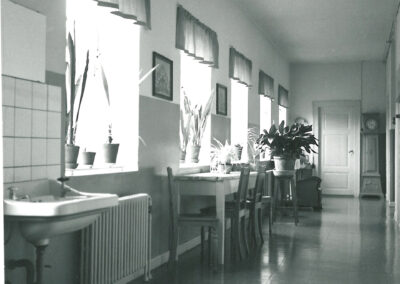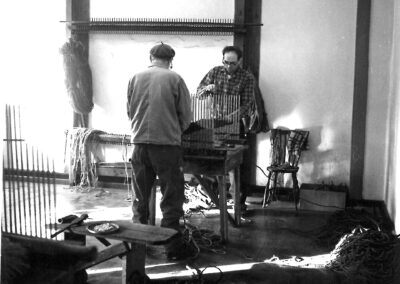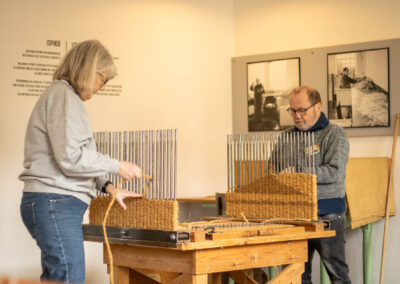About the Poor House
The Poor House was in operation from 1872 to 1974
Poor House for 102 years
The Poor House in Svendborg was built in 1872 under the name “Svendborg Kiøbstads Poor- and Workhouse”.
It was a modern institution for its time, designed for those who were deemed ’worthy or unworthy’ paupers.
Deserving or undeserving poor
Upon arrival at the Poor House, one was ‘admitted’ and deprived of civil rights: voting rights, property rights, guardianship over their children, and the right to marriage.
The warden interviewed the newcomers and determined whether they were ‘deserving or undeserving poor’.
The ‘deserving’ were placed in the Poorhouse, where they could enjoy wooden beds and duvets. The ‘undeserving’ were sent to the Workhouse, where iron beds and blankets were standard. Compulsory labor was applicable to all admitted.
Until 1961, the Poor House functioned as an institution where residents lost their freedom. From 1961 to 1974, it was converted into a welfare home, where staying behind the walls was theoretically voluntary.
Alma
Admitted to the Poor House from 1929 to 1974.
Alma had previously worked as a house assistant for local families before coming to the Poor House, where she washed stairs.
After the closure of the place, Alma moved to a nursing home.
Christian Larsen
From 1935 to 1974, Larsen served as the warden.
He initiated improvements to the physical facilities at the Poor House while striving to keep operating costs down.
In his spare time, he trained police dogs, and for a period, he was a member of the Svendborg City Council for the Social Democratic Party.
The Poor House as a museum
In 1974, the buildings, which were otherwise threatened with demolition by the municipality, were taken over by the Svendborg Museum. Since then, the museum has dedicated itself to preserving and safeguarding the Poor House, as well as the objects and stories associated with the place.
Since the late 1990s, the Danish Welfare Museum has researched and disseminated Danish welfare history.
In 2009, the buildings of the Poor House were made more accessible for people with disabilities.
Efforts continue to strengthen the museum’s collaboration with the people whose history falls within the museum’s area of responsibility.
Sofus
Sofus was admitted 48 times to the Poor House from 1908 to 1928.
He lived his life as homeless and was often found ‘heavily intoxicated’ by the police. Sofus’ health was deteriorating.
He received a wooden leg and died of tuberculosis after being bedridden at the Poor House for two years.
Petra
Petra was admitted to the Poor Farm five times from 1899 to 1907.
She lived by being a maid or had various casual jobs, including working at Svendborg’s taverns.
Petra had five children with five different men. With the exception of the youngest son, all the children were placed in foster care.



